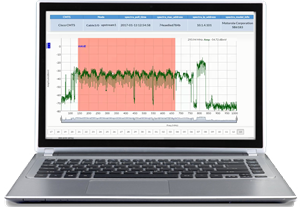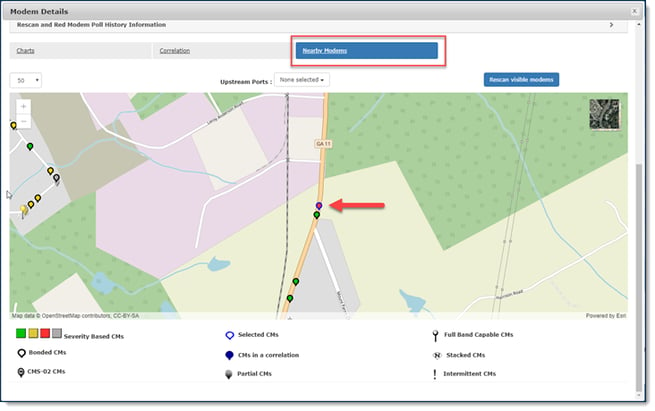Nowadays, over the top TV and video on demand streaming are the main drivers for additional bandwidth to your subscribers. And you can add to this the content and applications such as video surveillance, remote health care, video file transfers, [...]
New PON Technologies for Fiber Network Transformation
By Marsha Hemmerich | January 14th, 2020 |Categories: GPoN, FTTH, TWDM-PON, fiber optics, NG-PON2, FTTx, XGS-PON
Distributed Access Architecture Could Be Your Bandwidth Lifeline
By Marsha Hemmerich | September 25th, 2019 |Categories: DAA, Remote PHY, Remote MAC/PHY, MAC/PHY, Distributed Access Architecture
New technology is offering a lifeline for bandwidth pressed providers. A shift in the access architecture that will move some or all of the CMTS processing layers out to the plant and closer to the subscriber will increase capacity and expand the [...]

Identify Downstream RF Impairments With This eBook
By Marsha Hemmerich | September 18th, 2019 |Categories: DOCSIS, full band capture, cpe spectrum capture, forward path monitoring, remote spectrum analyzer, downstream spectrum issues
As a cable operator you have to do a lot of path monitoring to gauge the health of your plant. Most often the problems are in the upstream signals, but the downstream, while typically a “cleaner” set of frequencies, has challenges of its own and is [...]
Will 5G make wireline broadband obsolete?
By Rick Yuzzi | August 20th, 2019 |Categories: mmWave, Millimeter Wave, Rural Broadband, Small Cells, Wired Broadband
The buzz in the broadband industry these days is 5G. That’s not G as in Gigabytes. That’s G as in Generation. 5G is the latest generation of cellular technology, and some say that it could replace the need for wired broadband connections in the [...]
Connect America Fund CAF II Testing Requirement Details
By Marsha Hemmerich | August 13th, 2019 |Categories: caf ii, Connect America Fund, CAF II Requirements, CAF II Testing
Access to high-speed Internet in the U.S. has improved significantly over the years, but there are still some unserved and underserved rural communities where slow internet service is impacting the people who live, work and go to school there. The [...]

The Why and How of Distributed Denial of Service (DDoS) Attacks
By Rick Yuzzi | July 3rd, 2019 |Categories: DDoS Attacks, Distributed Denial of Service Attacks, Types of DDoS Attacks, Motivation for DDoS Attacks
DDoS attacks have continued to increase in number and sophistication, including those that can now leverage consumer IoT devices as a part of the attack. Who is behind DDoS attacks and what is their motivation? There are different reasons why DDoS [...]
Knowing What Your Subscribers Like to Watch Affects the Bottom Line
By Marsha Hemmerich | June 18th, 2019 |Categories: TV Viewership Analytics
Since the beginning of the cable TV era, countless TV programming negotiations between operators and the program owners have been haggled over, and mostly lost, by operators. That’s because for years operators have relied on simple counts to measure [...]

What is DOCSIS PNM and Why You Need It
By Rick Yuzzi | January 9th, 2019 |Categories: PNM, proactive network maintenance, correlation groups, DOCSIS pre-equalization, PreEqualization Analyzer, Diagnostics, Main Tap Compression, Group Delay, In Channel Frequency Response, ICFR, Micro Reflections, What is DOCSIS PNM
Diagnostics tools on a DOCSIS network have traditionallybeen part of a reactive, break-fix methodology, where the operator is notified about issues in their plant AFTER service for subscribers have been impacted. In fact, it is often complaints [...]
DOCSIS Codewords and their Importance in Monitoring RF Performance
By Rick Yuzzi | December 6th, 2018 |Categories: Codeword Errors, DOCSIS, Diagnostics, Monitoring
Codewords are a key feature and an important check on data transmission in DOCSIS networks. They are are often able to recreate bad bits of data corrupted by linear distortions and noise in the cable plant if the corruption is not too bad (a [...]
Running out of IPv4 Addresses? Here are two options.
By Rick Yuzzi | October 24th, 2018 |Categories: IPv6 migration, IPv4 Conservation, Carrier Grade NAT, CGNAT, Purchase IPv4 Addresses
If you are an ISP and haven't experienced your own IPv4 shortage yet, you most likely have heard that IPv4 addresses are getting hard to come by. This is sending many Internet providers into panic mode when they realize they are almost out. The end [...]







